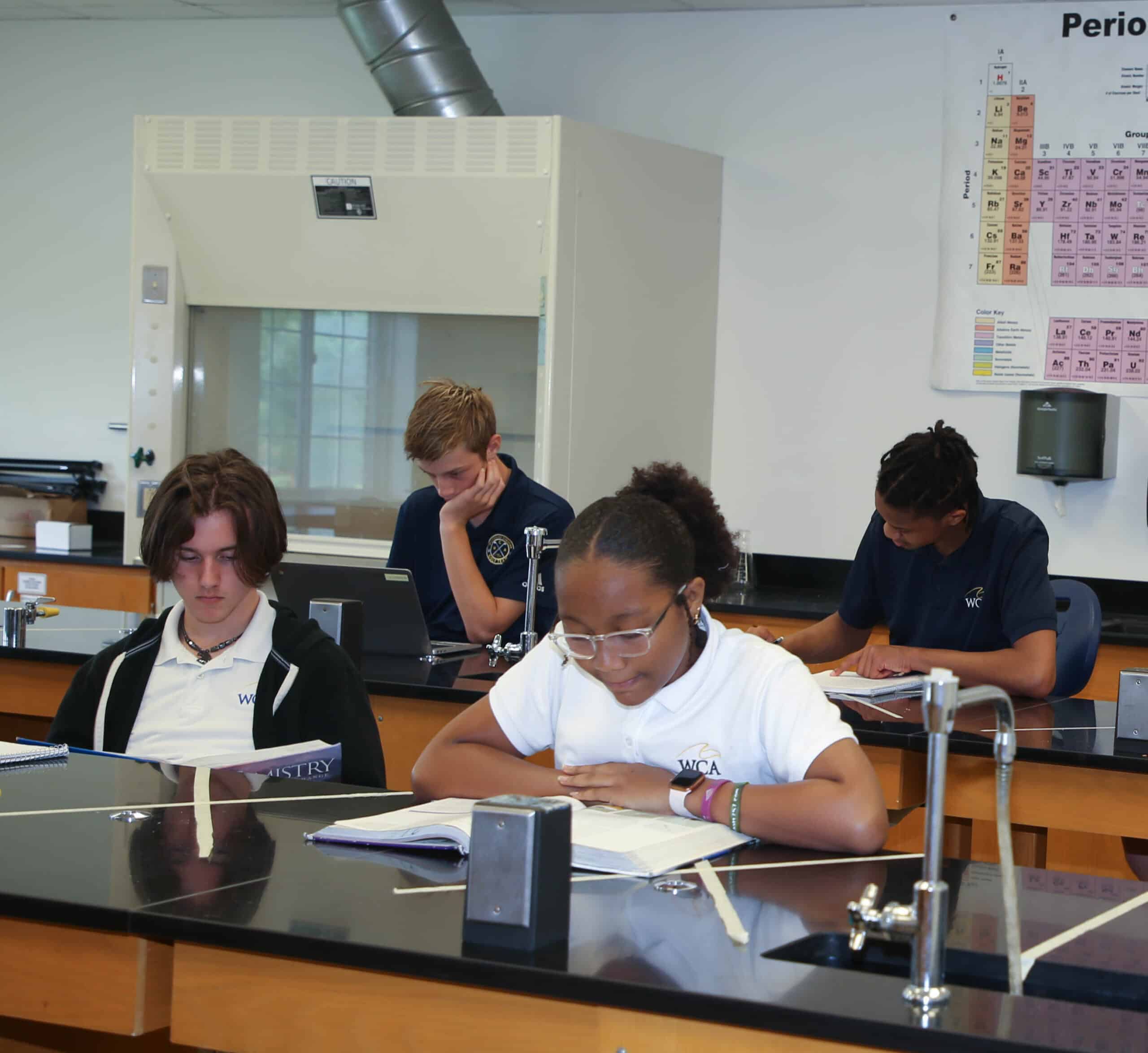Why The Flipped Learning Model Matters at Williamsburg Christian Academy

- April 24, 2025
- Academics, Blogs, Student Life
In today’s dynamic educational environment, Williamsburg Christian Academy is embracing innovative models that put students at the center of their learning experience. One of the most impactful approaches we’ve adopted is flipped learning—a model that not only enhances academic achievement in our Christ-centered curriculum, but also strengthens the student-teacher relationship and fosters long-term personal growth.
What is Flipped Learning?
More than a decade ago, high school teachers Jon Bergmann and Aaron Sams pioneered the flipped learning model, revolutionizing the traditional classroom structure. Instead of spending valuable class time lecturing, teachers assign video lessons as homework to introduce new concepts. This allows students to absorb content at their own pace—pausing, rewinding, and reviewing as needed—before arriving in class. Then, during classroom time, students engage in higher-level cognitive tasks such as applying, analyzing, and evaluating knowledge alongside peers and with the support of their teacher.
Empowering Every Student Through Innovation and Relationship
At Williamsburg Christian Academy, flipped learning is more than just a method—it’s a mission. It aligns with our core commitment to relationship-based, individualized instruction. The flipped classroom cultivates deeper relationships; each child is known, valued, and taught strategically. Teachers spend less time lecturing and more time observing, guiding, and mentoring students. With increased one-on-one and small group interactions, educators can identify individual learning gaps and tailor instruction accordingly.
This model also helps eliminate the pressure and confusion around homework. Students no longer face the stress of attempting difficult assignments alone. Instead, they come to class ready to engage with the content they’ve already encountered, supported by peers and teachers. Parents, too, benefit—by viewing the same lessons at home, they can better understand and support their child’s learning without feeling the burden of being the teacher.
Encouraging Independence with Flipped Learning
Flipped learning is a gateway to individualized and mastery learning. By watching video lessons at their own pace, students can review material as many times as needed without fear of embarrassment or falling behind. This freedom significantly decreases anxiety and builds confidence, particularly for students who struggle with fast-paced instruction or who benefit from repetition.
Moreover, the flipped model makes learning more equitable. During the pandemic, WCA educators honed their use of technology, laying the foundation for a smooth transition into flipped learning. With the recent adoption of Brightspace, a powerful learning management system, teachers can now create and share engaging video lessons effortlessly, while students can easily access content from anywhere.
Preparing For College
In the Upper School at Williamsburg Christian Academy, flipped learning is proving to be a game-changer. As students in grades 9–12 face increasing academic demands and prepare for the transition to college, this model provides a powerful framework that fosters independence, critical thinking, and deep learning.
Rather than relying on traditional lecture-based instruction, Upper School teachers use flipped learning to maximize class time for engagement, collaboration, and mentorship. Students are introduced to new material through teacher-created video lessons that they watch at home. This gives them the freedom to pause, rewind, and reflect on complex concepts without the pressure of keeping up with a fast-paced lecture.
When they return to the classroom, they’re not passive recipients of knowledge—they’re active participants in meaningful learning experiences. Whether it’s discussing a literary theme, solving real-world math problems, conducting science experiments, or working on project-based learning in history, students engage in higher-order thinking with the support of teachers and peers.
Why The Flipped Learning Model Matters at Williamsburg Christian Academy

- April 24, 2025
- Academics, Blogs, Student Life
In today’s dynamic educational environment, Williamsburg Christian Academy is embracing innovative models that put students at the center of their learning experience. One of the most impactful approaches we’ve adopted is flipped learning—a model that not only enhances academic achievement in our Christ-centered curriculum, but also strengthens the student-teacher relationship and fosters long-term personal growth.
What is Flipped Learning?
More than a decade ago, high school teachers Jon Bergmann and Aaron Sams pioneered the flipped learning model, revolutionizing the traditional classroom structure. Instead of spending valuable class time lecturing, teachers assign video lessons as homework to introduce new concepts. This allows students to absorb content at their own pace—pausing, rewinding, and reviewing as needed—before arriving in class. Then, during classroom time, students engage in higher-level cognitive tasks such as applying, analyzing, and evaluating knowledge alongside peers and with the support of their teacher.
Empowering Every Student Through Innovation and Relationship
At Williamsburg Christian Academy, flipped learning is more than just a method—it’s a mission. It aligns with our core commitment to relationship-based, individualized instruction. The flipped classroom cultivates deeper relationships; each child is known, valued, and taught strategically. Teachers spend less time lecturing and more time observing, guiding, and mentoring students. With increased one-on-one and small group interactions, educators can identify individual learning gaps and tailor instruction accordingly.
This model also helps eliminate the pressure and confusion around homework. Students no longer face the stress of attempting difficult assignments alone. Instead, they come to class ready to engage with the content they’ve already encountered, supported by peers and teachers. Parents, too, benefit—by viewing the same lessons at home, they can better understand and support their child’s learning without feeling the burden of being the teacher.
Encouraging Independence with Flipped Learning
Flipped learning is a gateway to individualized and mastery learning. By watching video lessons at their own pace, students can review material as many times as needed without fear of embarrassment or falling behind. This freedom significantly decreases anxiety and builds confidence, particularly for students who struggle with fast-paced instruction or who benefit from repetition.
Moreover, the flipped model makes learning more equitable. During the pandemic, WCA educators honed their use of technology, laying the foundation for a smooth transition into flipped learning. With the recent adoption of Brightspace, a powerful learning management system, teachers can now create and share engaging video lessons effortlessly, while students can easily access content from anywhere.
Preparing For College
In the Upper School at Williamsburg Christian Academy, flipped learning is proving to be a game-changer. As students in grades 9–12 face increasing academic demands and prepare for the transition to college, this model provides a powerful framework that fosters independence, critical thinking, and deep learning.
Rather than relying on traditional lecture-based instruction, Upper School teachers use flipped learning to maximize class time for engagement, collaboration, and mentorship. Students are introduced to new material through teacher-created video lessons that they watch at home. This gives them the freedom to pause, rewind, and reflect on complex concepts without the pressure of keeping up with a fast-paced lecture.
When they return to the classroom, they’re not passive recipients of knowledge—they’re active participants in meaningful learning experiences. Whether it’s discussing a literary theme, solving real-world math problems, conducting science experiments, or working on project-based learning in history, students engage in higher-order thinking with the support of teachers and peers.



